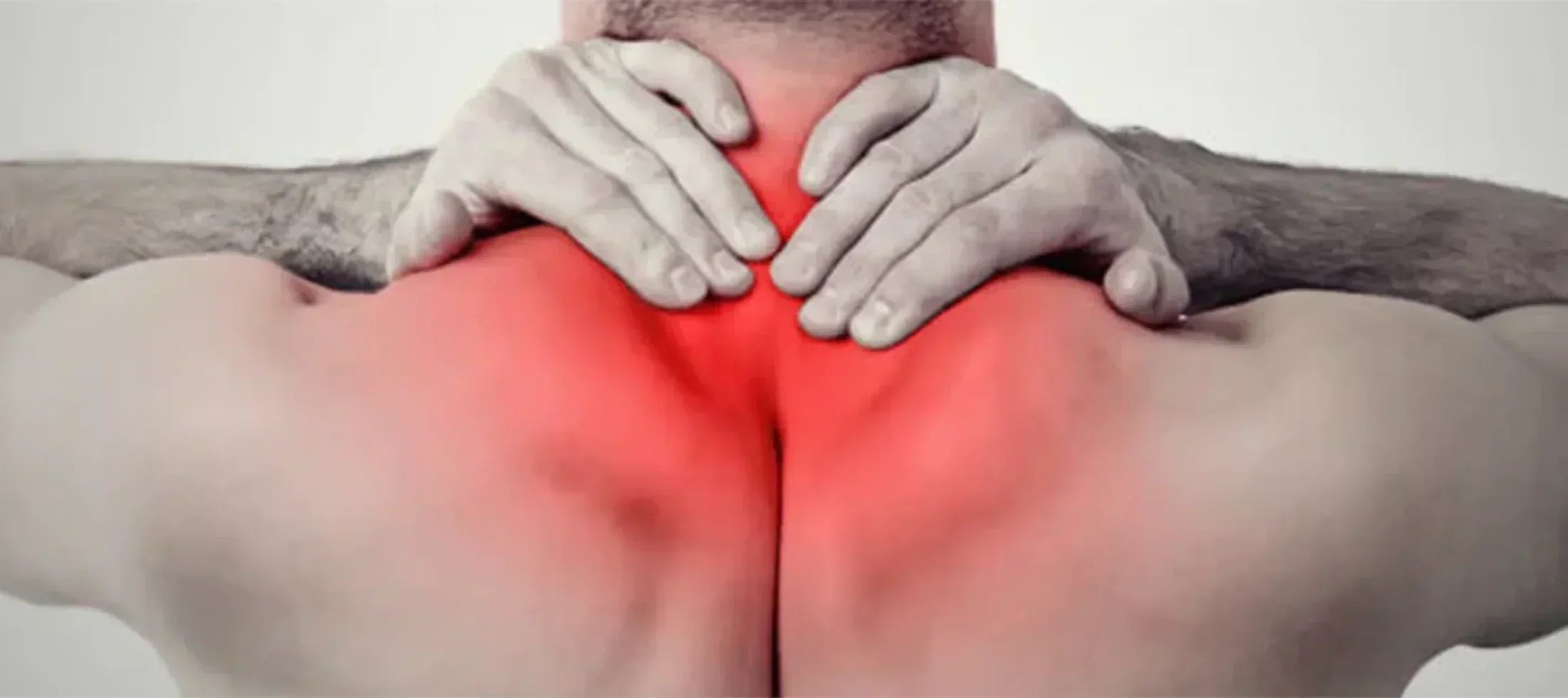Overview
Muscle pull injuries are common during workouts. They can happen to beginners and experienced athletes alike. Whether you're lifting weights, running, or engaging in high-intensity training, a sudden strain can disrupt your fitness goals. The good news? Muscle pulls are preventable. If you are wondering how to avoid muscle pull, the answer lies in proper preparation, technique, and listening to your body. In this guide, we’ll explore essential strategies to help you prevent muscle pulls and keep your workouts safe and effective.
How to Avoid Pulling Muscles
Pulling a muscle can be painful and slow down your progress. By taking the right steps, you can reduce the risk of common workout injuries. Let’s look at how to stay safe.
What Causes Exercise Injuries?
Injuries during exercise can happen due to various factors. It is often due to improper training habits or neglecting essential precautions. Understanding these causes can help you take the necessary steps to prevent them and ensure a safe and effective workout.
1. Skipping Warm-Ups and Cool-Downs
Failing to warm up before exercise can leave your muscles stiff and less prepared for movement. It increases the risk of strains and sprains. Likewise, skipping a proper cool-down can lead to muscle stiffness and soreness. Thus, it reduces flexibility and makes future workouts more difficult.
2. Overtraining or Lifting Too Much Weight
Pushing your body beyond its limits without adequate rest can result in fatigue and muscle imbalances. It can also lead to overuse injuries like tendinitis or stress fractures. Lifting excessive weight without gradually building strength can strain muscles and joints, leading to serious injuries.
3. Poor Posture or Incorrect Form
Using improper form during exercises such as rounding your back during deadlifts or letting your knees cave inward during squats can put unnecessary stress on your joints, ligaments, and muscles. Over time, this can lead to chronic pain and injuries that may require medical attention.
4. Sudden Movements or Lack of Flexibility
Abrupt, uncontrolled movements such as jerking or twisting too quickly can lead to muscle strains or ligament tears. Additionally, poor flexibility reduces your range of motion, making it harder for your body to absorb impact and adjust to different exercises safely.
5. Insufficient Hydration and Poor Nutrition
Dehydration can lead to muscle cramps, dizziness, and fatigue, making you more susceptible to injury. A lack of proper nutrients, especially protein and essential minerals, can weaken muscles and bones. It increases the possibility of strains, fractures, or slow recovery from workouts.
Now, let’s go over the best ways to avoid muscle pull injuries.
Warm Up and Cool Down
Never skip warm-ups before your workout, as they are essential for preparing your body for physical activity. Warming up properly helps your heart rate rise gradually. It also enhances blood circulation to your muscles, ligaments, and joints. This increased blood flow helps supply oxygen and nutrients to your muscles, making them more flexible and reducing the risk of strains or tears.
Warm-ups also activate your nervous system, improving coordination and reaction time. This is crucial for exercises that require balance and agility. Additionally, an effective warm-up session mentally prepares you for the workout ahead, increasing focus and motivation.
A cool-down session after exercise is just as important as the warm-up. Gradually reducing activity during cool-down helps normalize heart rate and breathing. Thus, it prevents dizziness or a sudden drop in blood pressure. It also helps relax your muscles, reducing post-workout stiffness and soreness.
One of the important benefits of a proper cool-down is its role in reducing lactic acid accumulation. Lactic acid is a byproduct of intense exercise that can cause muscle cramps and discomfort. Stretching during the cool-down phase helps maintain flexibility, improve circulation, and prevent injuries.
Additionally, it promotes muscle recovery, reducing the risk of delayed onset muscle soreness (DOMS), which can affect your mobility in the next few days.
Warm-up ideas:
-
Light jogging or jumping jacks
-
Arm circles and leg swings
-
Dynamic stretches like lunges
-
Shoulder rolls and neck stretches
Cool-down ideas:
-
Slow walking for 5 minutes
-
Deep breathing exercises
-
Gentle stretching
-
Foam rolling for muscle relaxation
To Stretch or Not to Stretch
Stretching is an essential component of any workout routine, but its effectiveness depends on the type and timing of the stretch. Research indicates that dynamic stretching before exercise enhances flexibility and performance by improving blood flow and muscle activation. Dynamic stretches, such as leg swings and arm circles, prepare the body for movement by increasing muscle elasticity and range of motion without causing excessive muscle relaxation.
On the other hand, static stretching, where a position is held for an extended period, is more beneficial after exercise. Studies suggest that static stretching post-workout helps reduce muscle tightness and improve long-term. However, excessive static stretching before exercise may temporarily weaken muscle strength and power, potentially increasing the risk of injury.
It is crucial to avoid overstretching, as this can lead to microtears in muscle fibers. Stretching should be controlled and gentle. Holding a stretch for too long or bouncing (ballistic stretching) can cause muscle strain rather than preventing it. Instead, focus on proper technique, ensuring that each stretch remains within a comfortable range of motion.
Choose Your Exercise Wisely
Selecting the right exercises based on fitness level is key to preventing injuries and ensuring steady progress. A sudden increase in workout intensity, especially for beginners, can lead to common issues such as muscle strains, joint stress, and even stress fractures. Gradual progression is essential to allow the body to adapt to increased demands safely.
For those new to exercising, low-impact activities such as walking, cycling, or bodyweight exercises are excellent starting points. These workouts build foundational strength and endurance while minimizing stress on joints and muscles. High-intensity workouts, such as sprinting or heavy lifting, should only be introduced once the body is conditioned and proper form has been mastered.
When trying new exercises, it is advisable to start with lower resistance and focus on technique before adding intensity. Poor form under heavy resistance increases the likelihood of musculoskeletal injuries, particularly in the lower back and knees If uncertain, consulting a fitness professional can help ensure proper execution and prevent potential setbacks.
Use the Right Equipment
Using improper gear while exercising can significantly increase the risk of injury. Inappropriate footwear and poorly maintained equipment contribute to a high percentage of sports-related injuries. Always wear properly fitted shoes that provide adequate arch and ankle support, particularly if engaging in high-impact activities like running or jumping. Footwear that lacks cushioning or stability can lead to conditions such as plantar fasciitis or shin splints.
When incorporating resistance training, use weights or resistance bands that match your current strength level. Overloading your muscles with excessive weight can lead to strains and ligament injuries. If working out at home, ensure your exercise area is free from obstacles and has a non-slippery surface to prevent home workout injuries and accidental falls.
In a gym setting, always check that machines are in good condition and properly adjusted to suit your height and body alignment. Poorly adjusted gym equipment can increase stress on joints and muscles, leading to overuse injuries.
Learn Good Form
Incorrect posture is one of the leading causes of muscle strain and long-term joint issues. Studies indicate that poor form while exercising can place excessive stress on the musculoskeletal system, increasing the risk of injuries such as tendinitis and lower back pain. Focusing on proper form and technique in exercise is essential before increasing workout intensity.. If necessary, consult a certified trainer who can provide guidance on posture and movement patterns.
Using a mirror or recording yourself can help identify and correct improper forms. Engaging the right muscle groups is essential to prevent compensatory movements that may lead to injuries.
Additionally, controlled movements should take priority over speed or lifting heavy weights too quickly. Research suggests that slow, controlled movements optimize muscle activation while reducing the likelihood of strain-related injuries.
Listen to Your Body
Pain is an important warning signal that should not be ignored. Exercising through pain can exacerbate minor injuries, potentially leading to chronic conditions such as stress fractures or tendon tears. Stop immediately if you experience discomfort during a workout and assess the cause. Muscle soreness is normal, but sharp or persistent pain may indicate an underlying issue.
Proper rest is important for muscle repair and growth. Studies have shown that rest days prevent overuse injuries and allow the body to rebuild stronger muscle fibers. Hydration and nutrition also play essential roles in muscle recovery.
Dehydration can impair muscle function and increase the risk of cramps and fatigue, while a balanced diet rich in protein and essential nutrients supports tissue repair. Moreover, quality sleep is vital for muscle recovery, as growth hormone production peaks during deep sleep cycles. Ignoring fatigue and consistently pushing through pain can turn minor strains into severe, long-term injuries.
Conclusion
Preventing workout injuries is easy if you follow these steps. Warm-up and cool down, stretch wisely, and choose safe exercises. Use the right equipment and maintain good form. Most importantly, listen to your body. Stay consistent and injury-free! By learning how to avoid muscle pull injuries, you can work out confidently and improve your fitness without setbacks.
FAQs
What is the most common reason for muscle pulls during workouts?
Mostly it happens when people skip warm-ups or start lifting too heavy too fast. Bad form and tired muscles also increase the risk. Always warm up, move properly, and take rest seriously.
Does stretching before a workout prevent injuries?
Yes, but not static stretching. You should do dynamic movements like leg swings, arm circles, or light jogging before exercise. This helps muscles warm up without getting too loose.
What role does nutrition play in injury prevention?
Nutrition is key. Muscles need protein, water, and essential nutrients to work properly. Without them, they stay tight, weak, and more likely to tear under stress. Supplements can help fill the gap too.



Share:
How To Start Running After An Injury
Tips to a Faster Sprained Ankle Recovery